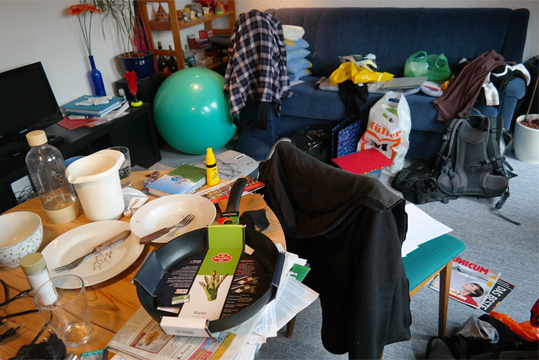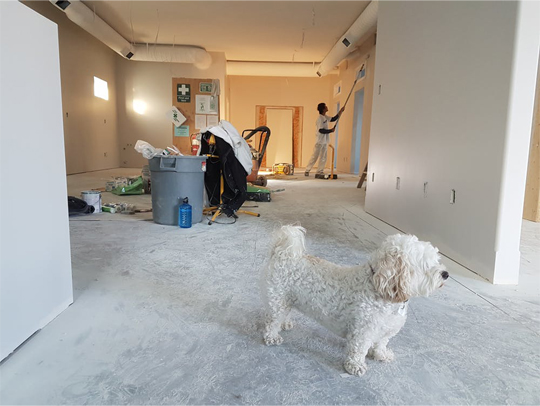Home Field Advantage: The Best MLB Cities in the US
America’s favorite pastime officially kicks off the 2018 season today with all 30 teams playing on the same day–for the first time in 50 years! While other major league sports have relatively short seasons, basketball and hockey each have 82 games in the regular season. While the NFL has a paltry 16 per team, baseball takes it to another level with a seven-month, 162-game regular season. Each year, baseball fans can expect to see their favorite team play approximately 81 games in their home field, making these cities the perfect place for superfans to call home.
If you’re a fan of the sport, but not a particular team, there are many cities where you’ll find your own home field advantage. Looking for a great deal? Try Detroit. Want to cheer for the most-winningest team in MLB history? You’ll be headed to the Bronx, New York to cheer on the New York Yankees. Want to enjoy great weather from spring training to Game 7? Cheering on the Padres in San Diego is right up your alley. Here’s where you can find the right home base to cheer on a major league baseball team!
Looking for a home team where you can afford a home? Check out these teams!

| Team | City | Median Home Price |
|---|---|---|
| Detroit Tigers | Detroit, Michigan | $44,500 |
| Cleveland Indians | Cleveland, Ohio | $71,396 |
| Milwaukee Brewers | Milwaukee, Wisconsin | $114,900 |
| St. Louis Cardinals | St. Louis, Missouri | $129,990 |
| Baltimore Orioles | Baltimore, Maryland | $135,000 |
Is price no object when it comes to root, root, rooting for the home team? What about one of these great cities?

| Team | City | Median Home Price |
|---|---|---|
| San Francisco Giants | San Francisco, California | $1,195,000 |
| Toronto Blue Jays | Toronto, Canada | $825,000 |
| Los Angeles Dodgers | Los Angeles, California | $750,000 |
| Boston Red Sox | Boston, Massachusetts | $749,000 |
| New York Mets | Flushing, New York | $720,000 |
Want to cheer on the home team with a large crowd? You’re sure to find other fans in these major league-sized cities.

| Team | City | City Population |
|---|---|---|
| New York Mets | Flushing, New York | 8,175,133 |
| Los Angeles Dodgers | Los Angeles, California | 3,971,883 |
| Chicago White Sox & Chicago Cubs |
Chicago, Illinois | 2,720,546 |
| Toronto Blue Jays | Toronto, Canada | 2,600,000 |
| Houston Astros | Houston, Texas | 2,296,224 |
Wanting to streamline your roster? These are the smallest cities with MLB teams.

| Team | City | City Population |
|---|---|---|
| Tampa Bay Rays | Tampa Bay, Florida | 257,083 |
| Cincinnati Reds | Cincinnati, Ohio | 296,943 |
| Pittsburgh Pirates | Pittsburgh, Pennsylvania | 304,391 |
| St. Louis Cardinals | St. Louis, Missouri | 315,685 |
| Los Angeles Angels of Anaheim |
Anaheim, California | 350,742 |

If baseball is a way of life for you and your crew, these are the cities with the right weather to keep the games rolling all year long.
| Team | City | Average Temp Opening Day | Average Temp Last Day Regular Season |
|---|---|---|---|
| Kansas City Royals | Kansas City, Missouri | 58 | 72 |
| Washington Nationals | Washington D.C. | 58 | 73 |
| St. Louis Cardinals | St. Louis, Missouri | 59 | 74 |
| San Francisco Giants | San Francisco, California | 62 | 71 |
| Oakland Athletics | Oakland, California | 63 | 73 |
Love baseball, but want your off-season weather make you long for spring training? Check out one of these cold weather teams.

| Team | City | Average Temp Opening Day | Average Temp Last Day Regular Season |
|---|---|---|---|
| Cleveland Indians | Cleveland, Ohio | 45 | 66 |
| Toronto Blue Jays | Toronto, Canada | 42 | 61 |
| Milwaukee Brewers | Milwaukee, Wisconsin | 44 | 63 |
| Chicago White Sox Chicago Cubs |
Chicago, Illinois | 47 | 66 |
| Boston Red Sox Detroit Tigers |
Boston, Massachusetts Detroit, Michigan |
48 | 66 |
If what you’re really after, though is a city with history of being world series champs, these are the most winningest teams and cities.

| Team | City | Number of World Series Winds |
|---|---|---|
| New York Yankees | Bronx, New York | 27 |
| St. Louis Cardinals | St. Louis, Missouri | 11 |
| Oakland Athletics | Oakland, California | 9 |
| Boston Red Sox San Francisco Giants |
Boston, Massachusetts San Francisco, California |
8 |
| Los Angeles Dodgers | Los Angeles, California | 6 |
However, if you’re a fan of underdog victories and long shots, you might just find your Cinderella story in one of these cities. None of these teams has ever won a World Series Championship.

| Team | City |
|---|---|
| Milwaukee Brewers | Milwaukee, Wisconsin |
| Colorado Rockies | Denver, Colorado |
| Washington Nationals | Washington D.C. |
| Texas Rangers | Arlington, Texas |
| Seattle Mariners | Seattle, Washington |
| Tampa Bay Rays | St. Petersburg, Florida |
| San Diego Padres | San Diego, California |






































